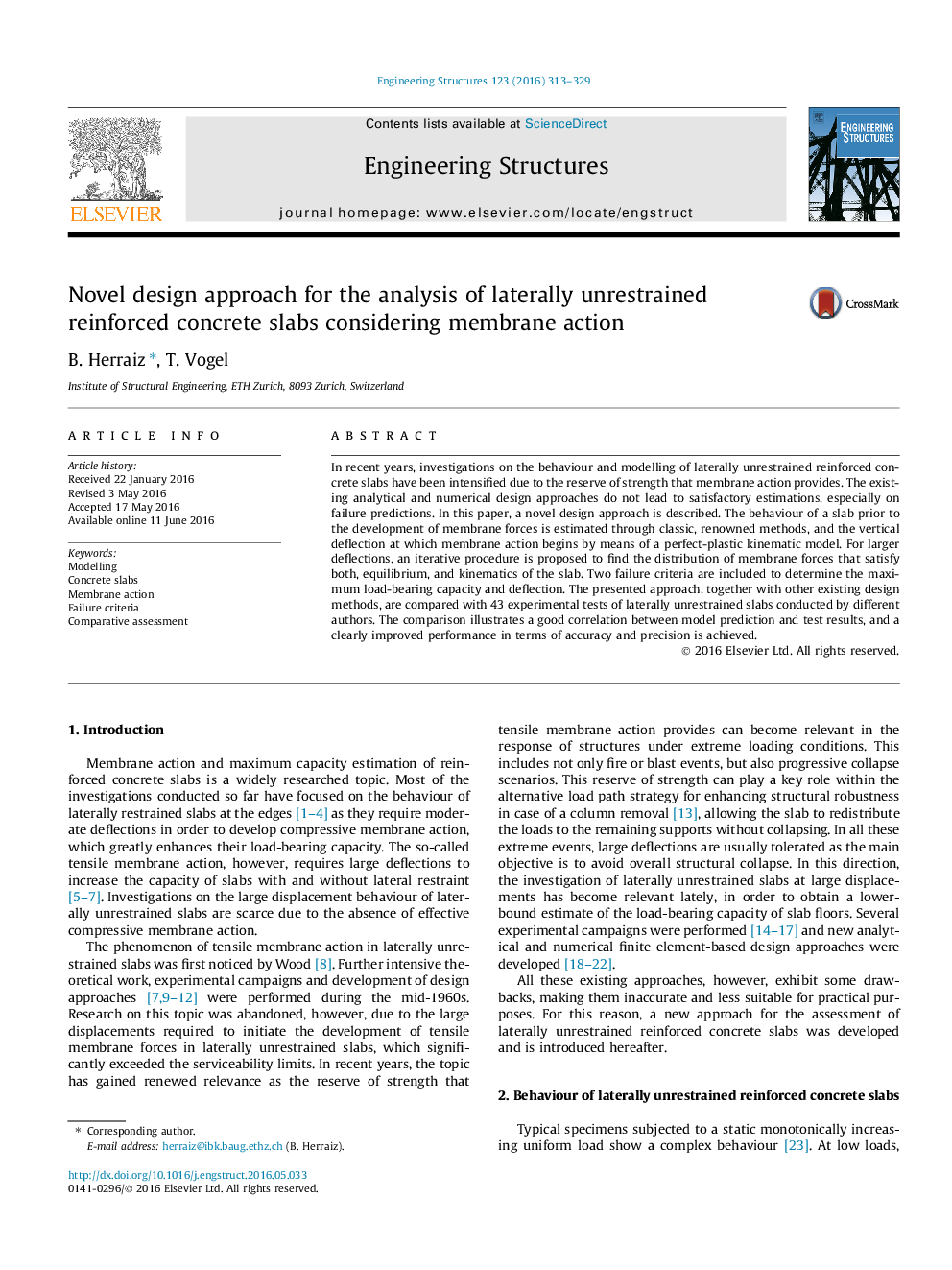| Article ID | Journal | Published Year | Pages | File Type |
|---|---|---|---|---|
| 265686 | Engineering Structures | 2016 | 17 Pages |
•Membrane action can be relevant for structures under extreme loading conditions.•Existing methods for the analysis of laterally unrestrained slabs are inaccurate.•A new approach based on kinematics and equilibrium is proposed.•A comparison with 43 experimental tests conducted by different authors is included.•Comparison shows a good correlation between new model predictions and test results.
In recent years, investigations on the behaviour and modelling of laterally unrestrained reinforced concrete slabs have been intensified due to the reserve of strength that membrane action provides. The existing analytical and numerical design approaches do not lead to satisfactory estimations, especially on failure predictions. In this paper, a novel design approach is described. The behaviour of a slab prior to the development of membrane forces is estimated through classic, renowned methods, and the vertical deflection at which membrane action begins by means of a perfect-plastic kinematic model. For larger deflections, an iterative procedure is proposed to find the distribution of membrane forces that satisfy both, equilibrium, and kinematics of the slab. Two failure criteria are included to determine the maximum load-bearing capacity and deflection. The presented approach, together with other existing design methods, are compared with 43 experimental tests of laterally unrestrained slabs conducted by different authors. The comparison illustrates a good correlation between model prediction and test results, and a clearly improved performance in terms of accuracy and precision is achieved.
